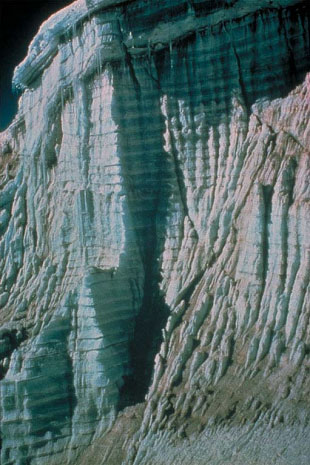 This image of the Quelccaya ice cap in the Andes of South America taken by Dr. Lonnie Thompson of the Byrd Polar Research Center at Ohio State University clearly shows the annual accumulation layers that are found in glaciers. In polar regions, snow typically falls in the darker winter months, but in the Andes, which are close to the equator but at a high altitude, the accumulation occurs between the months of November and April, which is the rainy season at lower elevations.
This image of the Quelccaya ice cap in the Andes of South America taken by Dr. Lonnie Thompson of the Byrd Polar Research Center at Ohio State University clearly shows the annual accumulation layers that are found in glaciers. In polar regions, snow typically falls in the darker winter months, but in the Andes, which are close to the equator but at a high altitude, the accumulation occurs between the months of November and April, which is the rainy season at lower elevations.
Scientists who study past climate, called paleoclimatologists, use core samples of ice retrieved from glaciers to study the annual accumulation patterns over thousands of years. Air bubbles trapped in the ice and other clues, such as dust particles, can help us reconstruct past climate.
From the ice core record we know that climate over tens and even thousands of years can vary, sometimes abruptly, but the record also helps us understand natural processes and to determine with confidence that climate changes occurring now have a human signature.






